What follows is a guest post by Aderemi Artis.
“All philosophy is based on only two things, having a curious spirit, and bad eyes.”1
I
In an interesting aside in the Essay Concerning Human Understanding (1689), Locke writes, “Were our Senses alter’d, and made much quicker and acuter, the appearance and outward Scheme of things would have quite another Face to us.”2 Raised on comic books wherein heroes and villains often had augmented senses, I have long dreamed about what the world would look like to superhuman perception. Locke himself specifically mentions the prospect of our vision being made “100000 times more acute than…the best Microscope.” Records of his library also show he had a copy of Robert Hooke’s popular and hard-to-get Micrographia (1665),3 in which Hooke described the microscope as an “artificial Organ.” Here is one of Hooke’s images of a fly, the sort of appearance Locke might have had in mind:

Hooke was able to achieve different orders of magnification of flies, and a closer look at one yielded him this:

One of the first photographic images I made after getting a macro lens was also of a fly, inspired by Hooke’s work. Macro lenses tend to allow the photographer to get close to the subject, and provide a large and detailed image, with a lot of apparent magnification. They are made especially to photograph very small things. I thought (wrongly, it turned out) that the fly I photographed was in temporary torpor; in addition, I did not realize that the closer I approached the subject, the less light would be available (especially indoors in my house). The less available light, the poorer the image overall: less detail, less color, less nuance; more noise, more blur, more mush. However, in that early instance, by converting the image to black and white, and messing around a bit, something more than mush emerged.
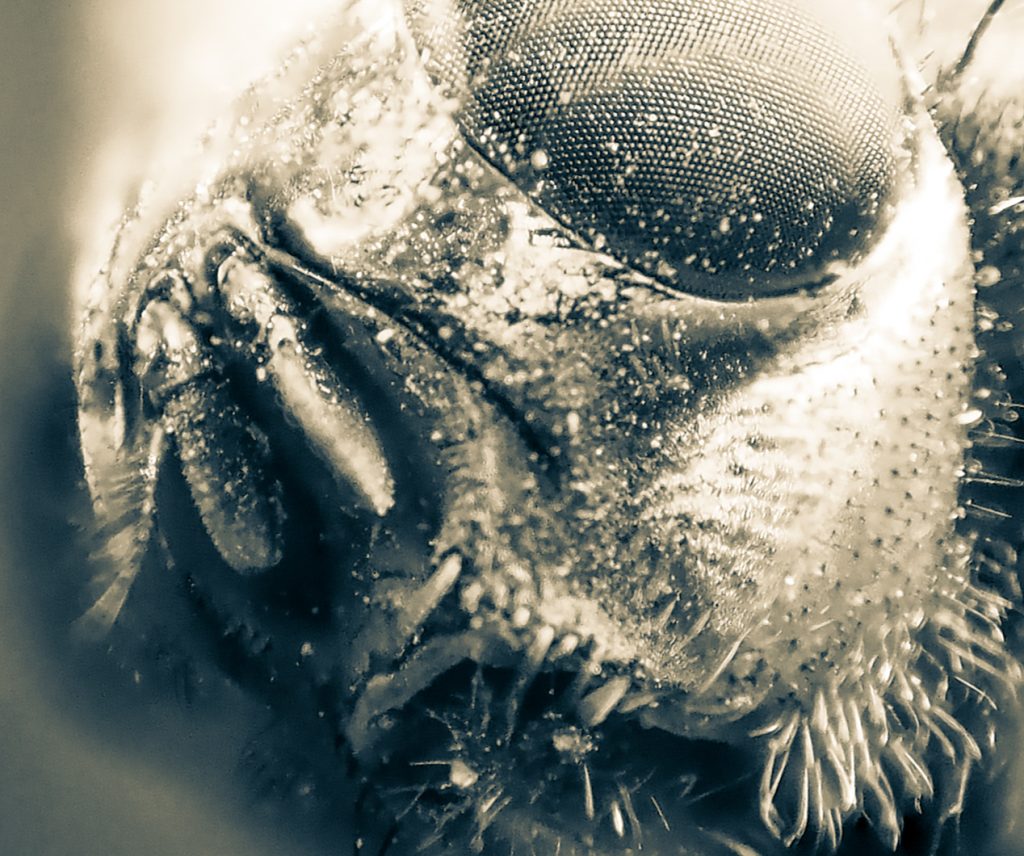
After this experience, I have spent most of my photography time outside (or with my camera pointed outside), in the humble patch of land surrounding my home in Michigan, looking at other Faces of the world. Even in broad daylight, acquiring images of very small things continues to prove challenging. The following was taken in midday blazing sun, on a calm cloudless day, with some testimony of such from the pointed catchlight in the spider’s eyes:
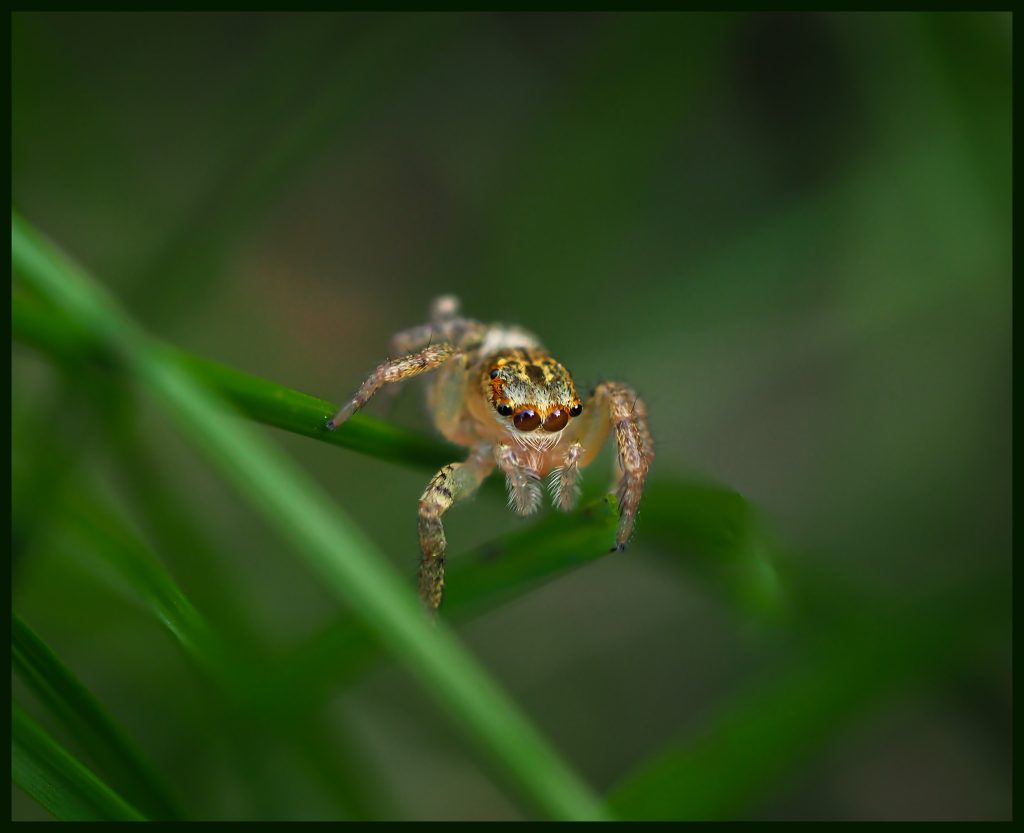
Note that while the subject is indeed well-lit, the ground and grass in the background appear darker than they would to unmagnified human vision. Moreover, significant cropping was needed, because I had to maintain enough distance, to have enough light, to make a suitably clear image; and, of course, to avoid disturbing the spider by touch. Fortunately, the combination of light and dark is, in this case, not displeasing. One can, indeed, push such lighting combinations further, such as in the image of this wildflower, blooming not far from the spider, perhaps twenty paces. It was taken around the same time of day, with similar light. Behind the flower was a tree and some ground, both in moderate shade; but unlike in the case of the spider, the tree and ground were both far enough from the subject so that essentially no light from them reached the sensor:
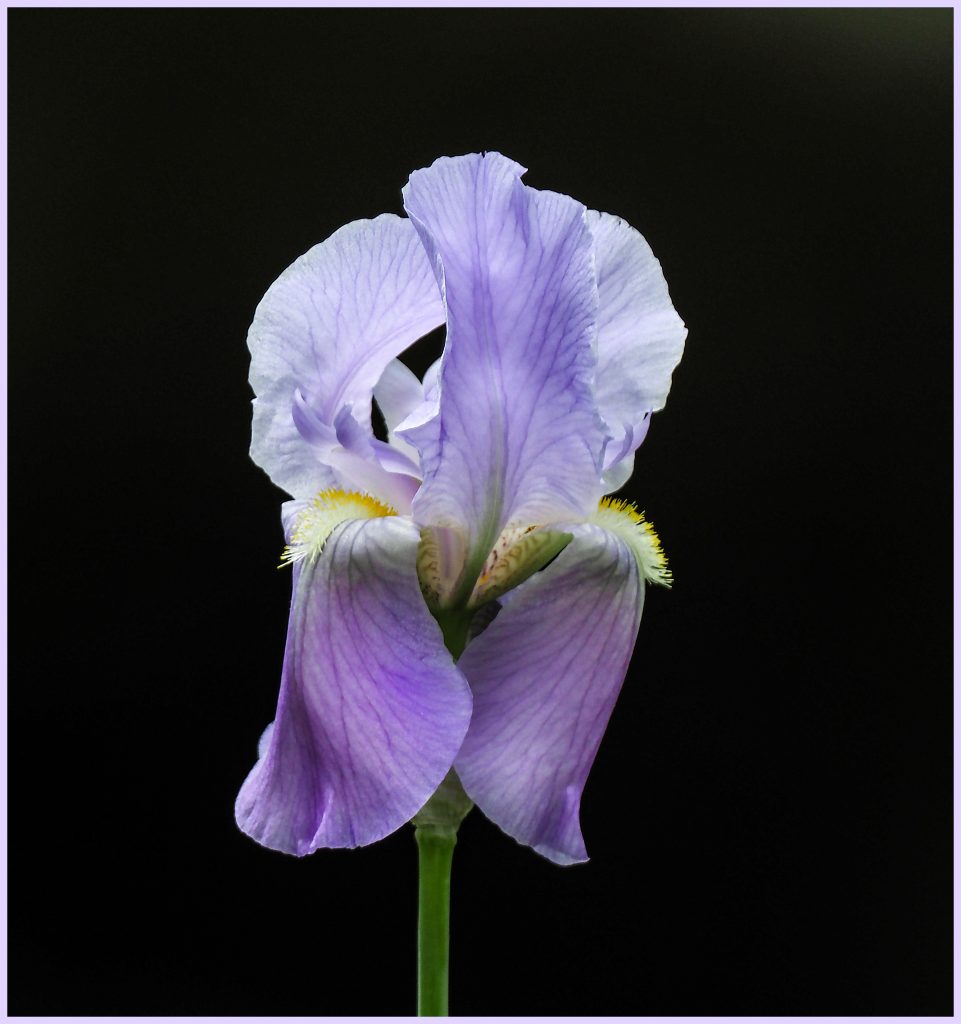
Now, when Locke speculated about having microscopic vision, he concluded that “such a quickness and tenderness of Sight could not endure bright Sun-shine, or so much as open Day-light.” Of course, our own unenhanced vision cannot stand looking directly at the sun for spans of time, but, more to the point, Hooke himself tells us in the preface to Micrographia what I gathered from experience:
though both Microscopes and Telescopes, as they now are, will magnifie an Object about a thousand times bigger then it appears to the naked eye; yet the Apertures of the Object-glasses are so very small, that very few Rays are admitted, and even of those few there are so many false, that the Object appears dark and indistinct…even of those that are best among them, none will admit a sufficient number of Rayes to magnifie the Object beyond a determinate bigness.
Hooke is saying, essentially, that as one uses more and more powerful microscopes, they will require more and more light to work properly. The “Object-glass” he refers to is the lens on a microscope closest to what’s being observed, and the aperture size is essentially the diameter of this mounted lens. In saying that the apertures of powerful microscopes are small, he is emphasizing the fact that their size doesn’t let in very much light for easy viewing of subjects. This means that microscopic vision would require more light to effectively resolve the same subject, compared to ordinary unenhanced vision. How could Locke have been so wrong?
II
While early microscopes and telescopes could reveal unfamiliar features of familiar objects and events of perception, they could also reveal phenomena not visible to the naked eye at all. And, while they could radically alter the appearance of spatial features and configurations, it would be natural to dream of devices which could enhance our perceptual capacities with respect to time as well as space. Such devices are implicit in the complaint made by Bacon in Novum Organum (two editions of which were in Locke’s possession), shortly after noting the fabulous spatial powers of the microscope and telescope: “It’s obvious that an act of sensing is completed through motion, and motion is completed in time. So if any motion of a body is either too slow or too fast, such that it’s not in proportion to the movement whereby the act of sensing is completed, then the object won’t be perceived at all.”4
Devices to augment temporal aspects of perception might enable us to see the apparent path of the stars through the night sky. Spans of time were often, in early modern Europe, represented by depictions of different discrete events, which had occurred at different times, as “snapshots” woven together in the same scene. Here, for example, is an image of the temporally extended creation from the 1544 Cosmographia of Sebastian Münster:

The modern camera has, in some ways, partially fulfilled the dream of a contraption with which to manipulate the perceptual appearance of temporal intervals not accessible to unenhanced humans. Visions of celestial motions can be had with long exposures, but given the faintness of light available, the largest apertures are most effective, in maximizing gathered light. Here is an early experimental long exposure of about twenty minutes of night sky, taken in a spot twixt the spider and wildflower:
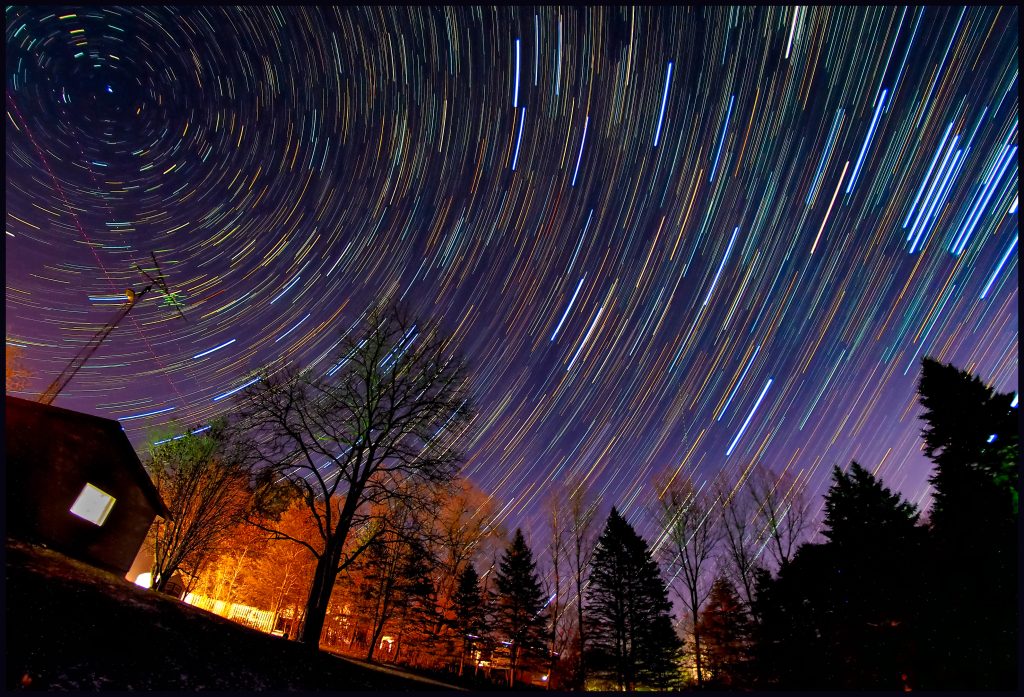
At the other end of the temporal spectrum, the early modern European naturalists seem to have been unaware of the nictitating membrane of birds, a translucent, semi-reflective membrane with which they blink. Using a sufficiently fast shutter speed on a camera (on the order of one one-thousandth of a second or faster), one can catch a bird with the nictitating membrane covering their eyes, and it has a very distinctive look to it. But wild birds are often skittish, thus a long lens with high magnification will be needed, so that the photographer doesn’t have to get too close and scare away the subject. And, generally speaking, as the reach of a telephoto lens gets longer, it will let in less light. In practice, what this means is that catching a bird in mid-blink is most easily accomplished when there is plenty of available natural light:

For reference, here is an image where the nictitating membrane is not covering the eyes:5
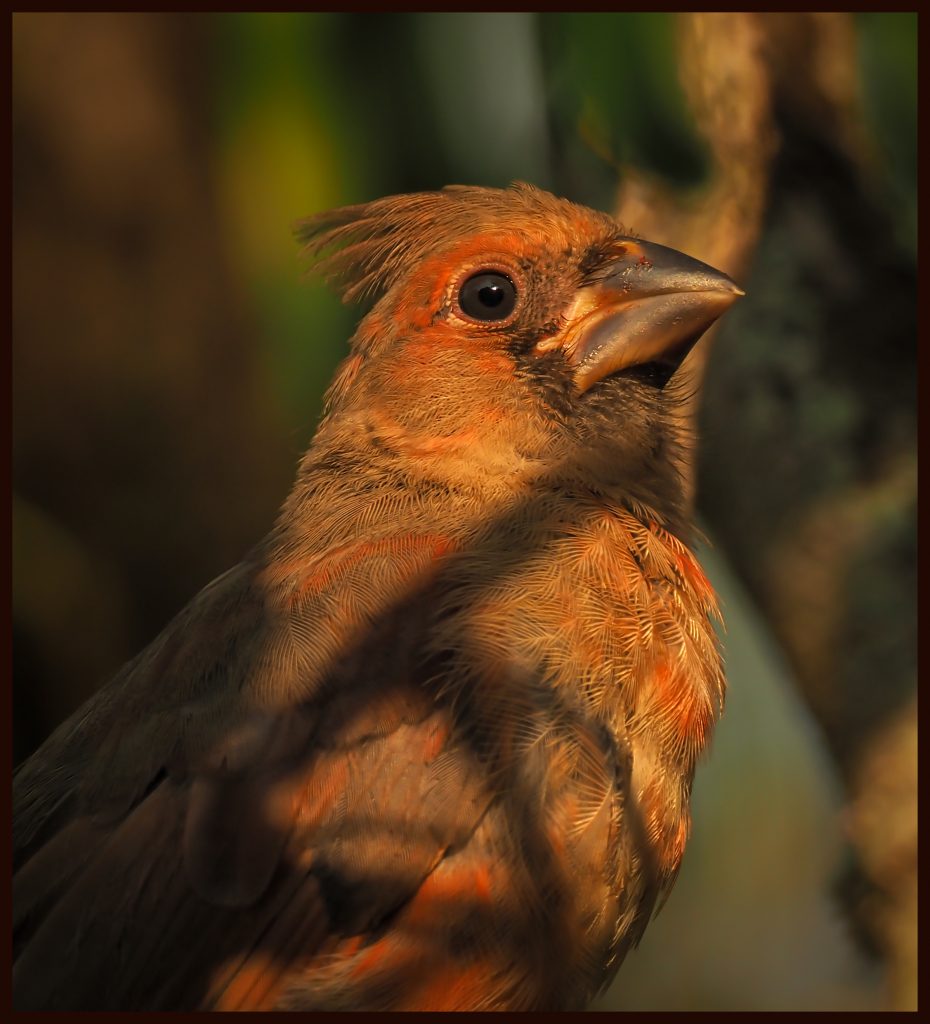
And here is a representative page of pictures of birds from The Ornithology of Francis Willoughby (1678):

Willoughby’s work, impressive as it is, lacks detailed, kinematically correct depictions of birds in different stages of flight, the details of which look to require somehow being able to slow down their apparent movement to a legible speed. It can, indeed, be quite difficult to discern the details of takeoff alone, especially of smaller birds, with unassisted vision. For instance, do smaller perched birds launch with both feet, with one foot, or alternate between launch styles? As far as I have been able to gather of late by experiment, the answer seems to be that they alternate, depending largely on the vagaries of circumstance. These images below were taken recently on a heavily overcast day, and thus the shutter speed could only be but so slow, which in turn resulted in some motion blur. In these instances, it seems to me the effect is nevertheless not disagreeable:
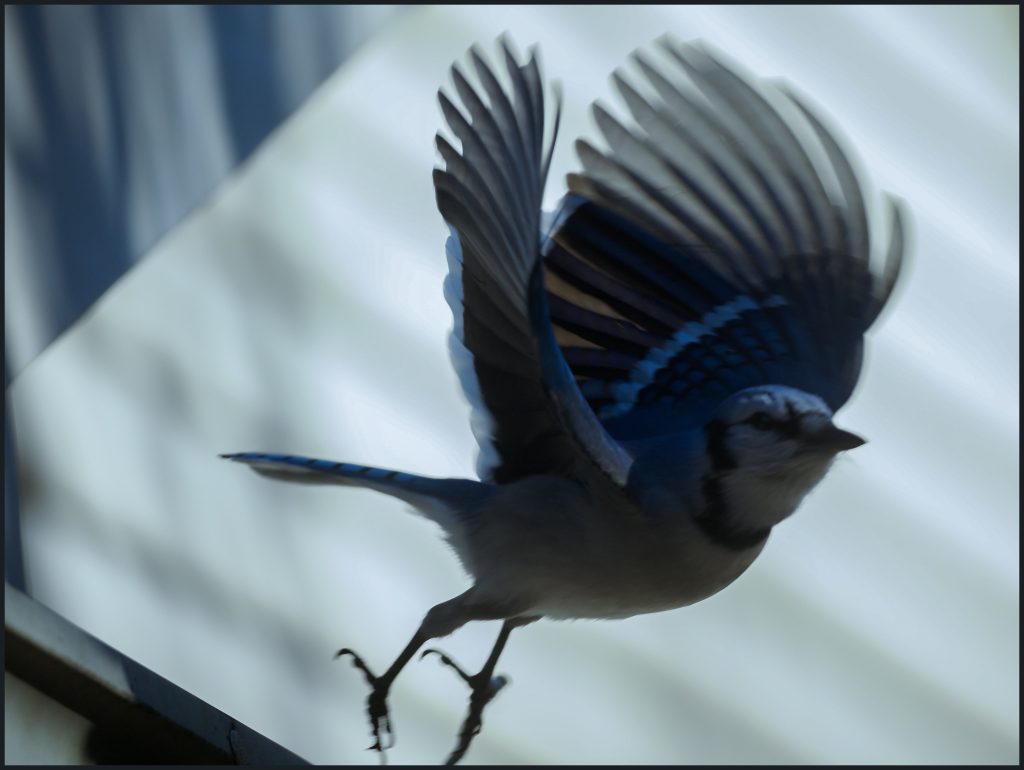

It was the miracle of photography, of course, that similarly, and famously, was used to settle the question of whether or not horses ever leave the ground completely whilst running. This feat was accomplished by Eadweard Muybridge in his well-known “The Horse in Motion” of 1878:
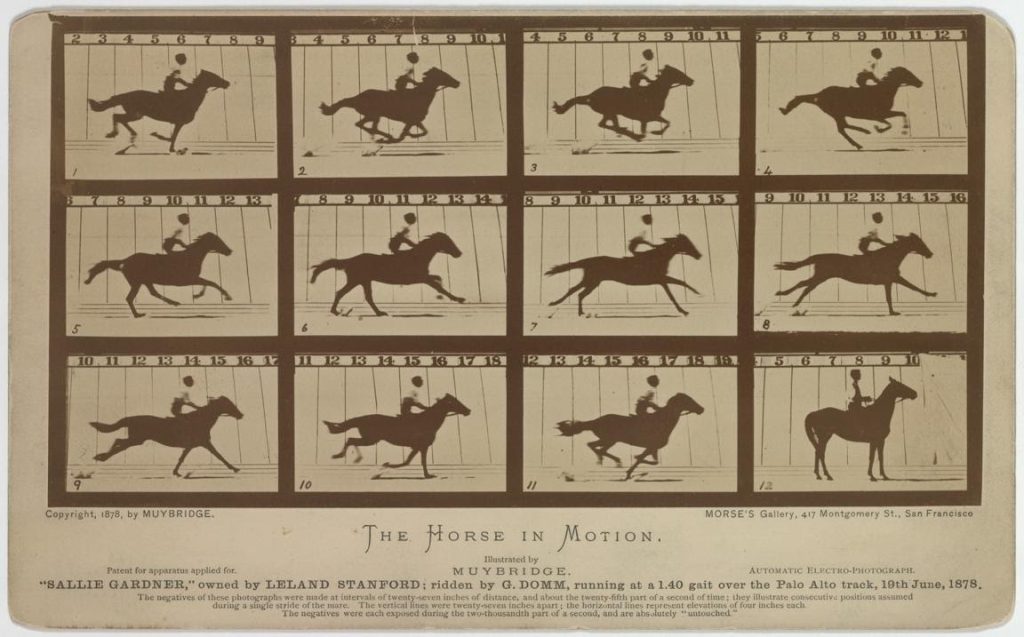
Muybridge would later publish his monumental Animal Locomotion: an Electro-photographic Investigation of Consecutive Phases of Animal Movements (1872-1885), which contained some more extended and detailed sequences:

During the production of this volume, Muybridge also began to experiment with projecting sequences of images of moving animals onto a surface, with his zoopraxiscope. This device included a spinning disc and a light source, which together allowed a given short sequence of images to be shown in succession quickly enough so that the projected animals seemed to be moving, and constituted an early version of what would become the movie projector.
While the early modern Europeans did not have the concept of visible light as a portion of a wider energetic electromagnetic spectrum, they did nevertheless depict invisible but natural entities, forces, and events “as if” visible. Thus we have William Gilbert’s depiction of a magnetic field as a visible sphere in his De Magnete (1600):

Modern commercial digital cameras come with a filter installed on the sensor, which reflects light outside of the visible spectrum (i.e. infrared and ultraviolet); however, this filter can be removed, and pictures can then be taken with other portions of the electromagnetic spectrum. Here is an infrared photo (circa 800nm-1100nm wavelengths) of a tree in my backyard:

The wavelength of infrared radiation is longer than that of visible light, with less energy per photon. And the amount of visible light and infrared radiation on the surface of the earth are roughly comparable. So if I have a camera that can shoot in both visible light and infrared, and I take one picture with visible light and another right afterward with infrared, the infrared image will generally appear darker, and less well-defined. Thus a meaningful and intelligible image of the same subject in infrared will require more light, as in all the other cases we have examined.6
III
Let us return to the query I posed in section I above: how could Locke have been so wrong about microscopic vision? After all, Hooke specifically points out in the Preface of Micrographia that more magnification results in less available light, and in a darker image. Locke owned a copy of Micrographia, and yet made the claim that microscopic vision would effectively blind us due to an excess of effective light. Was it just a hot take, to be forgiven as hot takes are? Had he purchased but not actually read Micrographia? There are many possibilities, but I think we can get a clue from another section of the Essay, where he writes the following:
Though the comprehension of our understanding comes exceeding short of the vast extent of things; yet we shall have cause enough to magnify the bountiful author of our being, for that proportion and degree of knowledge he has bestowed on us…How short soever their knowledge may come of an universal or perfect comprehension of whatsoever is, it yet secures their great concernments, that they have light enough to lead them to the knowledge of their maker, and the sight of their own duties…Our business here is not to know all things, but those which concern our conduct. 7
Locke had convinced himself that full knowledge of all nature was not really in the cards for us humans. Our attempts to know it must be grounded in the senses, and the use of the senses only informs of contingently arrayed powers producing certain effects in us, thus “our ignorance [is] infinitely larger than our knowledge.” No ingenious instruments can change this fundamental situation we find ourselves in, even if such instruments did not blind, or deafen, or otherwise disable us in their employment. Indeed, it would be a dangerous deception to suppose otherwise.
In contrast (he supposed), in morality, like mathematics, we can achieve certain knowledge: “morality [is] among the sciences capable of demonstration.” These twin epistemic facts, about the hiddenness of nature, and the demonstrability of morality, pointed to the purpose for which our creator has made us. From this perspective, spending too much energy chasing knowledge of nature in obedience to curiosity, by means of devices like microscopes and telescopes (and digital cameras), can lead to the neglect of our duties, and thereby, to our ruin and doom.8
We might conclude, then, that Locke was misled in his thought experiment not, per se, by a deep misunderstanding of microscopy or optics, or because cameras hadn’t been invented yet, but rather by his construal of the broad epistemic limits of sensibility. Sensibility is receptive, and so we can only infer from sensation the existence of mysterious causal powers beyond; at best, we can only guess at their true nature. The attempt to transcend sensibility through technology, to find the true nature of things, is at once hopeless and dangerous. Hooke, on the other hand, closely associates the active Hand with the receptive Eye, so much so that he views the microscope as providing assistance to, and augmentation of, the sense of touch as well as sight: “Thus the roughness and smoothness of a Body is made much more sensible by the help of a Microscope, then by the most tender and delicate Hand.” Microscopic vision as an adjunct to the agent reaching out to touch something.9
Later on, Berkeley (1685-1753) went in a new direction. Berkeley was a close reader of Locke who also had an extremely advanced understanding of scientific and mathematical optics. Indeed, he wrote important works specifically dedicated to optics and human vision, in which he argues that our visual perception of distance arises in part by means of learned associations between certain intertwined sequences of visual and tactile sensations. For instance, we learn through experience that, if we have clear and detailed visual sensations of the bark of a tree, which take up most of our visual field, this can be immediately followed by tactile sensations of roughness. In contrast, if we have only unclear and indistinct visual sensations of a stump, which only take up a small portion of our visual field, then those visual sensations cannot be immediately followed by tactile sensations of roughness. In other words, to see something as far away is to have the expectation that it will take you a long time to touch it.
Berkeley further argues that the associations between sensations of touch and naked-eye vision are very different compared to those between touch and microscopic vision. Since our understanding of the everyday visible world is composed of the associations between naked-eye vision and touch, he concludes, “A Microscope brings us, as it were, into a new World.”10 Not just another face of this world, but another world entirely.
Berkeley’s attitude toward microscopy (and knowledge of nature more generally) is, compared to Locke, more sanguine. On Berkeley’s account, to gain knowledge about, say, a fly, our goal is to learn about which sensations tend to be combined in our experiences of flies. And insofar as the sensations produced by microscopes are like any other in kind, he concludes that “when I look through a microscope…my aim is only to know what ideas are connected together; and the more a man knows of the connexion of ideas, the more he is said to know of the nature of things.”11
For Locke, when humans sense the natural world, those experiences point to the powers of events outside of us to produce our sensations, but not much more than that. For Berkeley, human sensations, in the way they are arranged and organized, point to the existence of an intelligent being as the cause of those sensations. Part of how this works is by analogy to language. When one human being talks to another, their speech reveals their intelligence; similarly, when we have sensations of nature, it is as if some immensely powerful being is using our sensations to talk to us. In the end, the production of visual sensations, magnified and unmagnified alike, ought to be understood as the “immediate Operation of God…a watchful, active, intelligent, free Spirit, with whom we have to do, and in whom we live, and move, and have our Being.”12 For the latter-day Berkeleyan armed with a camera, photography can become a divine revelation.
In any event, on a more pedestrian (but not for that reason less important) level, it is a passage from Berkeley’s Commonplace Book describing his stripling speculations in philosophy and the sciences, that certainly aptly characterizes much of my own backyard wanderings to see other Faces of the World: “in the end I return where I was before, but my heart at ease, and enjoying life with new satisfaction.”13

1“Toute la philosophie…n’est fondée que sur deux choses, sur ce qu’on a l’esprit curieux et les yeux mauvais,” Bernard le Bovier de Fontanelle, Entretiens sur la pluralite des mondes, 7 (1803 edition, originally published in 1686). This passage, along with those below from Hooke, are discussed in The Invisible World by Catherine Wilson. That wonderful work was itself originally brought to my attention by Bas van Fraassen, for which I am grateful.
2All passages from Locke’s Essay can be found at https://oll.libertyfund.org/title/locke-the-works-vol-1-an-essay-concerning-human-understanding-part-1
3The Library of John Locke, John Harrison and Peter Laslette, OUP, 1965.
4“Manifestum est actionem sensus transigi in motu, motum in tempore. Si igitur motus alicujus corporis sit vel tam tardus, vel tam velox, ut non sit proportionatus ad momenta in quibus transigitur actio sensus, objectum omnino non percipitur.” http://www.thelatinlibrary.com/bacon/bacon.liber2.shtml
5Once the appearance of the nictitating membrane has been discerned, it is often a relatively simple matter to simulate it by overexposure of the eye area of the bird; I leave this as an exercise for the reader.
6 In principle, since ultraviolet light is more energetic than visible light per photon, with a shorter wavelength, one might imagine that here would be one area where less light would be needed. However, first of all, the shortest UV light is blocked by the atmosphere. Second, only four or five percent of the sun’s light on the surface of the earth is (relatively long) ultraviolet, whereas over forty is visible, and over fifty is infrared. Third, most sensors in digital cameras are only sensitive down to around 200nm at the short end. Thus, to produce a photographic image of rough parity in quality, UV will require more light than IR, which itself requires more than visible light. As one gets further away from the visible spectrum, holding image quality and aperture constant, slower shutter speeds will therefore be required for natural light photography.
7 Without justification, Locke adds in this passage a note about the significance of our superiority to “the rest of the inhabitants of this our mansion.” He does not consider the possibility, which should have been obvious from Fontenelle’s Entretiens sur la pluralite des mondes, of extraterrestrial intelligent life. He likewise does not consider the possibility of superior angelic intelligence.
8 Extensive study of nature could, of course, be partially justified on practical grounds.
9 The passage is also from the preface to Micrographia. Hooke’s hands were evidently delicate enough to perform public and private painful and brutal vivisections of dogs, whose suffering he acknowledged, but believed was justified.
10 The Works of George Berkeley in Four Volumes, Volume I, 170.
11The Works of George Berkeley in Four Volumes, Volume I, 464.
12The Works of George Berkeley in Four Volumes, Volume II, 379-80.
13 The Works of George Berkeley in Four Volumes, Volume I, 92. The photo below, like that of the fly above, was originally made from the full spectrum of visible light, and converted afterward to black and white. In this case, the conversion was made after (and inspired by) my experience of the infrared, and also makes use of some of the processing techniques I learned first whilst dealing with infrared photos.
Dr. Aderemi Artis is Associate Professor of Philosophy at University of Michigan–Flint, and amateur photographer. Dr. Artis’ interests include early modern Europe, aesthetics, and philosophy of games and sport. Contact information: aartis@umich.edu.
Edited by Matt Strohl


